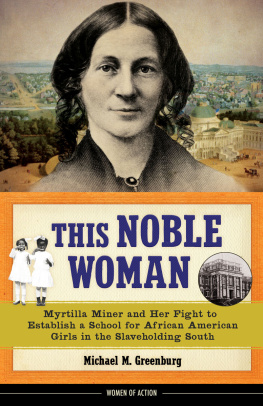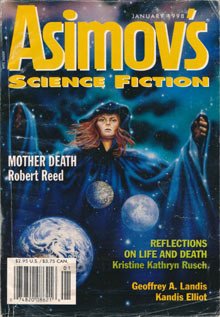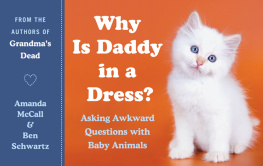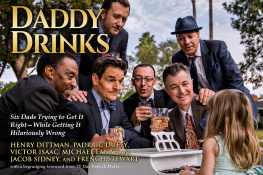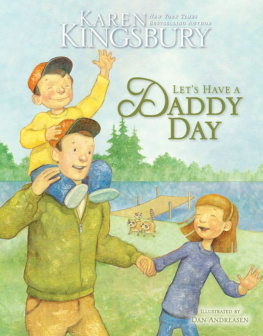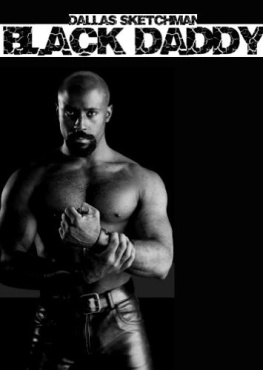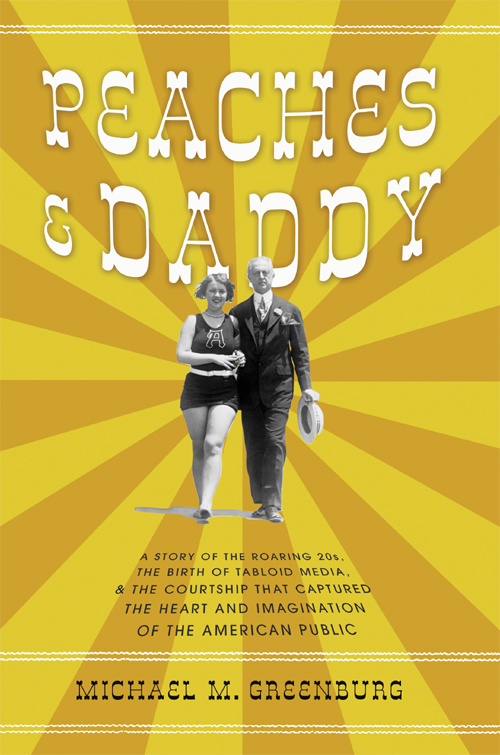This edition first published in the United States in 2008 by
The Overlook Press, Peter Mayer Publishers, Inc.
141 Wooster Street
New York, NY 10012
www.overlookpress.com
For bulk and special sales, please contact sales@overlookny.com
Copyright 2008 by Michael M. Greenburg
All rights reserved. No part of this publication may be reproduced or transmitted in any form or by any means, electronic or mechanical, including photocopy, recording, or any information storage and retrieval system now known or to be invented, without permission in writing from the publisher, except by a reviewer who wishes to quote brief passages in connection with a review written for inclusion in a magazine, newspaper, or broadcast.
ISBN 978-1-46830-607-1
To Donna, Corey, and Jeffrey
where the story begins

O N J ANUARY 6, 1970, the following exchange appeared in the Ann Landers column in newspapers across America:
D EAR A NN L ANDERS : Although you have never come right out and blasted May-December marriages, youve never endorsed them. Dont you realize age means nothing anymore? Its virtually impossible today to tell if a woman is 20 or 33. The same goes for men, now that hair tinting, toupes and face lifting are so popular. One of the most exciting May-December romances in history was the Peaches and Daddy Browning marriage. Why dont you tell your readers about it? It should give all men hope.
BOCA RATON, FLA.
D EAR B O : Hope for what? A trip to the poor house? Edward Browning was 51 when he met Frances Peaches Heenan at a sorority dance. She was 15. They were married on her 16th birthday. The marriage lasted less than a year during which time she spent approximately $1,000 a day in New York department stores. Id hardly call this a model marriage.
Ann Landers could not have been more succinct. The story of Peaches and Daddy is a study in dysfunction and remarkable excess, yet the lurid details of their brief courtship and marriage captured the imagination of the American public in a way no couple in history had ever done. Their saga appealed to both the prurient and the romantic and propelled them into the headlines and the bylines of the nations tabloid press for years to come.
In many ways, Edward Browning was the true Gatsby. He was a New York City millionaire, a beneficiary of the Coolidge prosperity, who understood the early 1920s as a time of great personal opportunity. New lifestyles and political forces were reshaping the world, and though Browning clearly profited from those forces, he seemed, for better or worse, to be a man swept up in the excesses of the day.
Frances Heenan was an unremarkable high school girl with unremarkable high school girl dreams and ambitions. Yet she, perhaps more than any other person, would become a symbol of the eccentric 1920s. When she met Edward Browning, she lived alone with her mother in a small apartment at the northern most tip of Manhattan. She worked as an auditing clerk (conspicuously absent from school), earning $15 per week. Peaches and Daddy could not have come from more opposite sides of the economic spectrum or from more divergent social backgrounds. Yet they were drawn together by the same stalwart fanaticism that would ultimately tear them apart.
At another moment in time, Peaches and Daddy might have been a pair of eccentrics whose paths happened to cross. But in 1926, America was ready to let them be much more than entertainment. The recent popularity of commercial journalism left newspaper editors constantly on the hunt for stories that would titillate their readersand the Brownings loved the public as much as the public loved them. Across the country, big city and small town newspapers alike clamored for every detail of the Brownings and their odd doings. Front-page headlines featuring the couple set readership records and people who had never read newspapers before began buying these photo-filled publications in record numbers.
While some staid and traditional city papers had difficulty making the transition from the informative to the interesting, that newborn brand of journalismthe tabloid, now such a bedrock of the news industrycreated itself around the Peaches and Daddy story. The New York Evening Graphic, for example, within two years of its inception, had managed a readership of six hundred thousand, while the Daily News reached an insurmountable one million readers.
Newspaper circulation is always dependent, however, on the vagaries of human nature and the fickle interest of the public. As with so many stories in todays world, the white-hot saga of Peaches and Daddy would be swallowed up by other momentous events of the day, and the marriage that sponsored so much upheaval in national law, codes, fashion trends, and moral debates vanished almost completely from public memory. The very industry of tabloid journalism that the Browning saga had sponsored abandoned them in the face of fresh and exciting national news. Peaches and Daddy were eclipsed by Charles Lindberghs famous trans-Atlantic journey, and then, shortly thereafter, by the tragic bombing at a schoolhouse in Bath, Michigan, which resulted in the death of forty-five people, mostly children. In light of these newsworthy items, the Brownings public was not as faithfully interested in them as either of them might have hoped. Peaches and Daddy were destined to become the forgotten jewel of a bygone era.
Forgotten, perhaps, but by no means irrelevant. This strange and nonconformist romance was no less than a cultural phenomenon, and exploration reveals an impact far greater than the sum of the often absurd events that shaped it. The story of Peaches and Daddy and its vivid press coverage forced 1920s America to confront issues of lasting importage disparity in marriage, child adoption, contact between men and underage femalesand laid the groundwork for what is lawful and acceptable today. The Browning marriage would become the springboard for many a legislative crusade in the battle for child protection, which survive to this day.
Beyond the obvious legal and moral questions presented by these issues, Peaches and Daddy, like many cultural icons, would effect great social change and contribute to popular notions and fashions of the day. Men and women, young and old and from every walk of American life, relentlessly followed the movements of Peaches and Daddy. They were loved by some, reviled by others, but ignored by none. Their styles were emulated and sometimes castigated, but perhaps no two people had a greater impact on how America looked at itself in the early twentieth century.
As Peaches and Daddy found their way into the courts of New York, so followed many questions of judicial practice and procedure. With modern advances in photography and the advent of mass media, judges across the country were forced to make far-reaching decisions that balanced the publics right to know against the requirement of decorum and privacy in the legal process. The highly controversial judgment to allow press and public access to the proceedings would reverberate for decades to come and would form the basis for the debate that rages to this very day.
The most pervasive impact of Peaches and Daddy was unquestionably felt in the realm of journalism. Intrepid newspaper editors persistently challenged the boundaries of the First Amendment and used Peaches and Daddy as a test case to further their pioneering methods of expression. Though some paid a heavy price, their legacy remains today as a signpost for Freedom of the Press in the face of distasteful content. American mass media as we know it todayits tolerance for truth, decency, obscenity, and imaginationcame of age at this unique moment in history.


